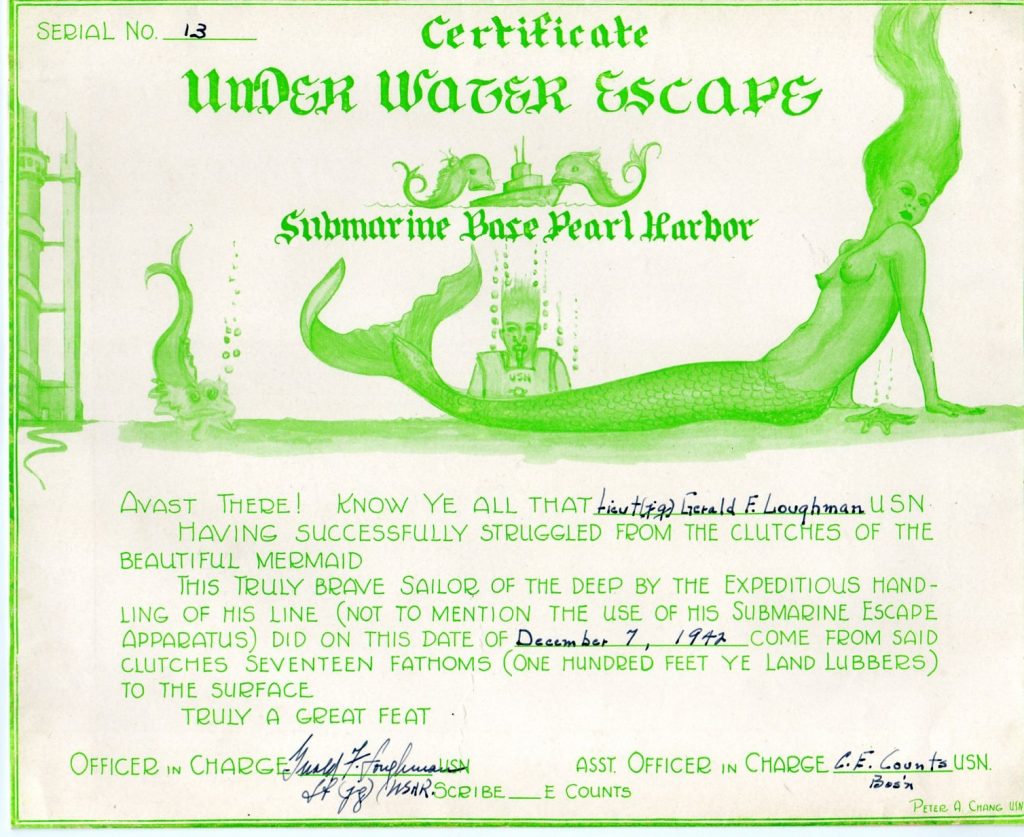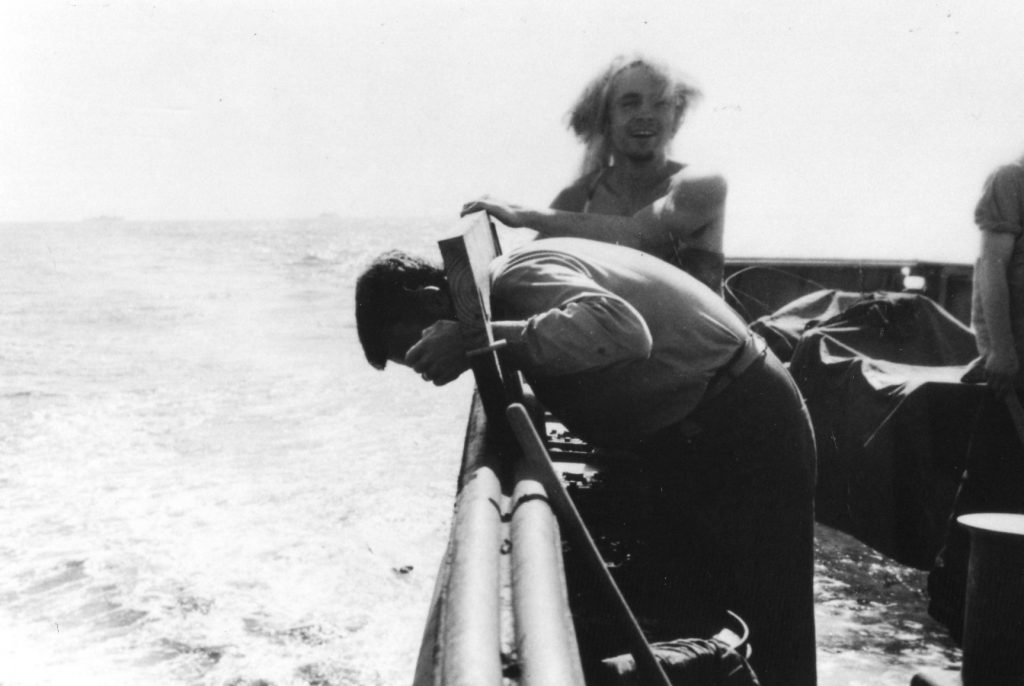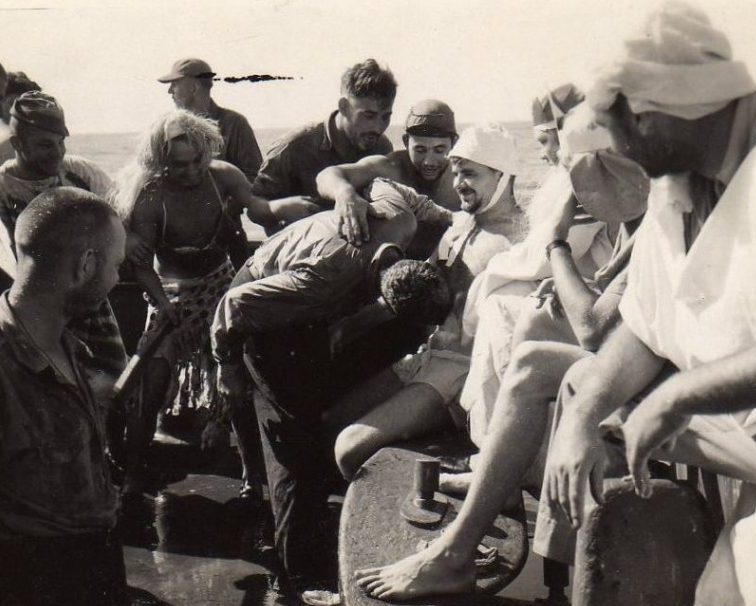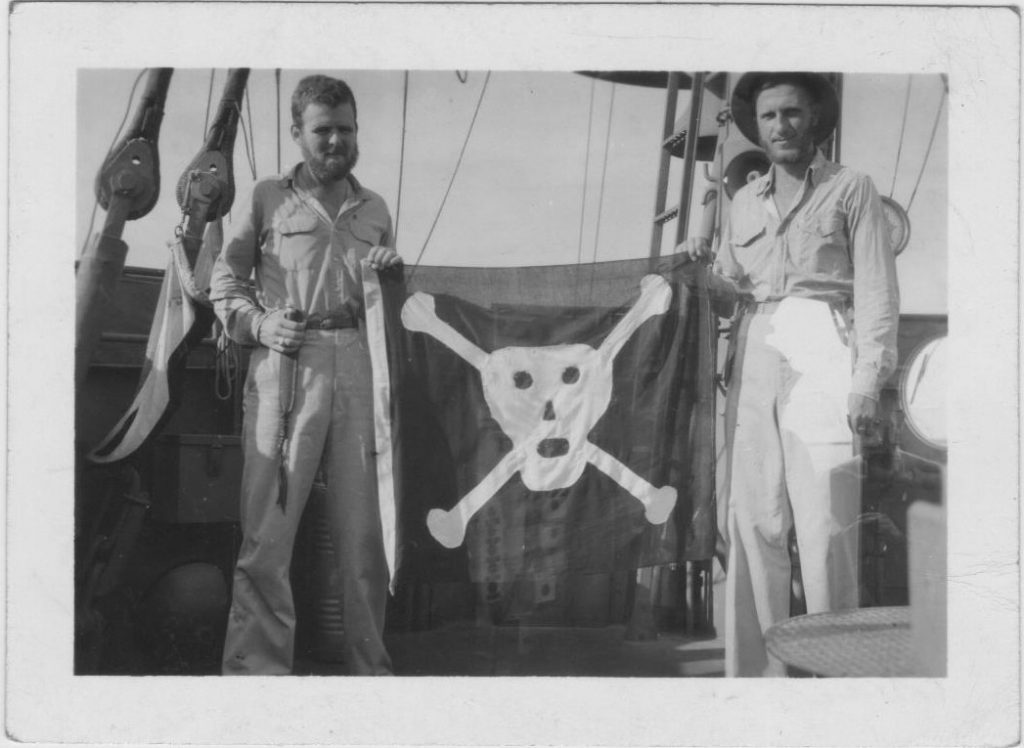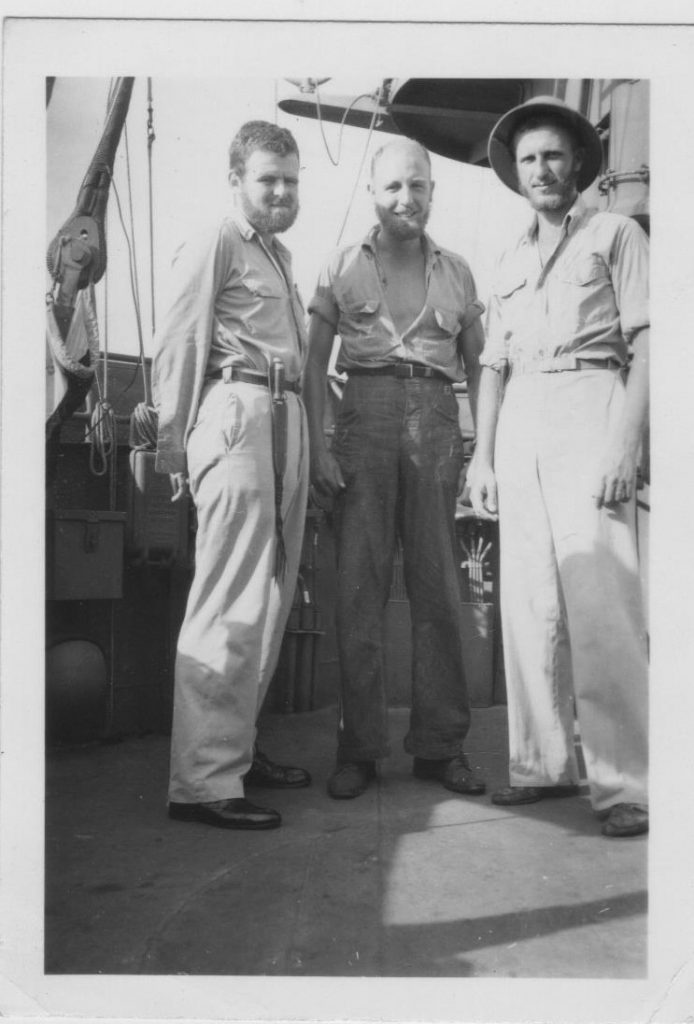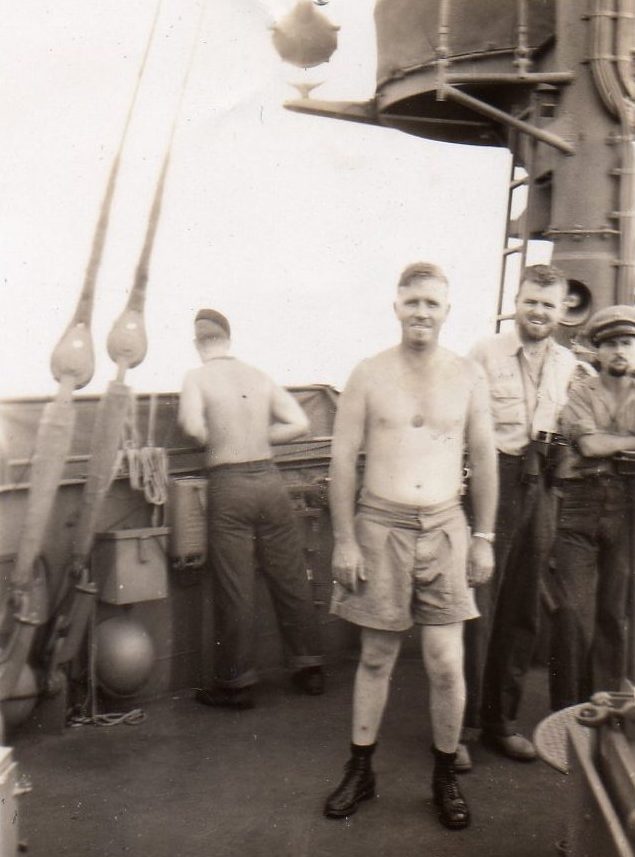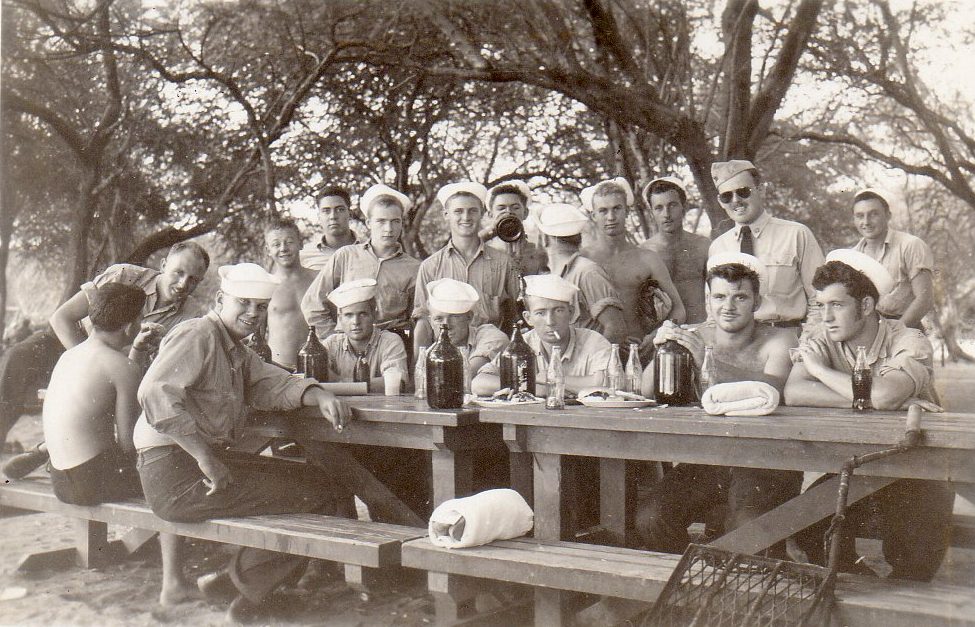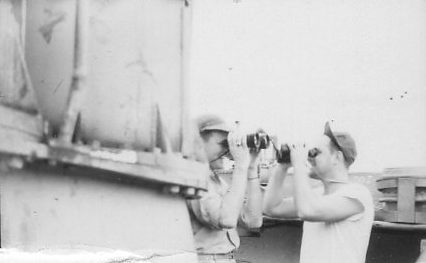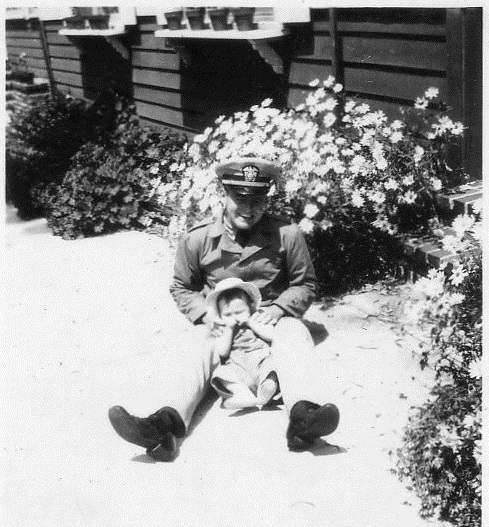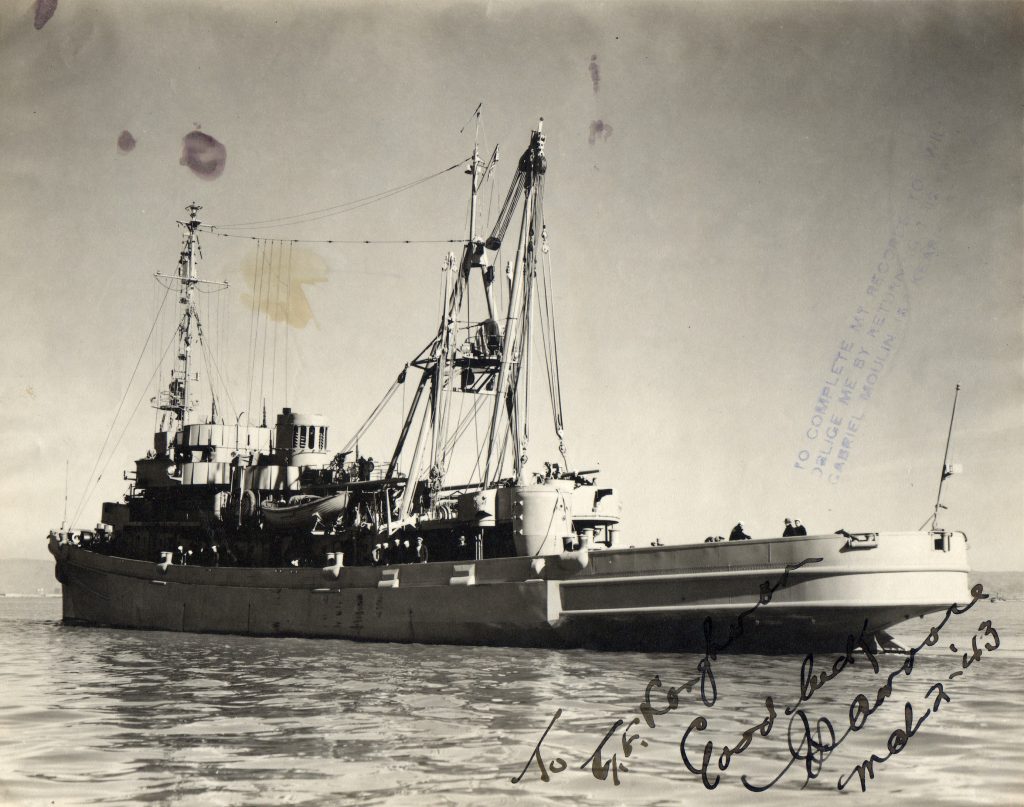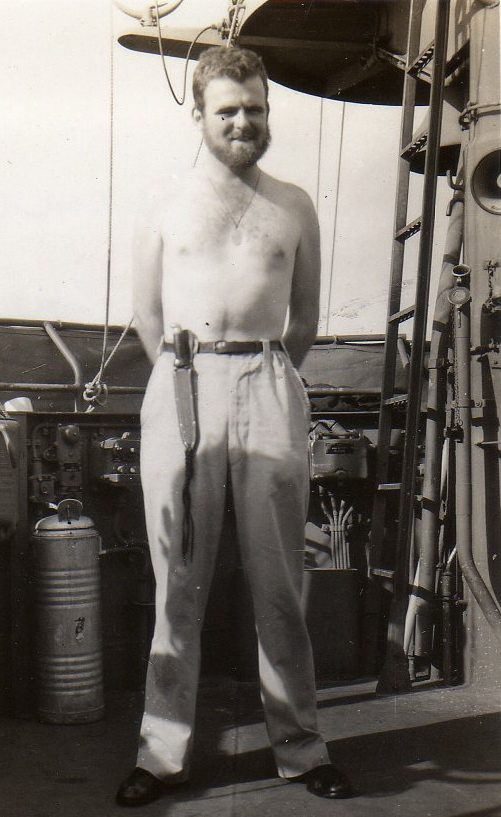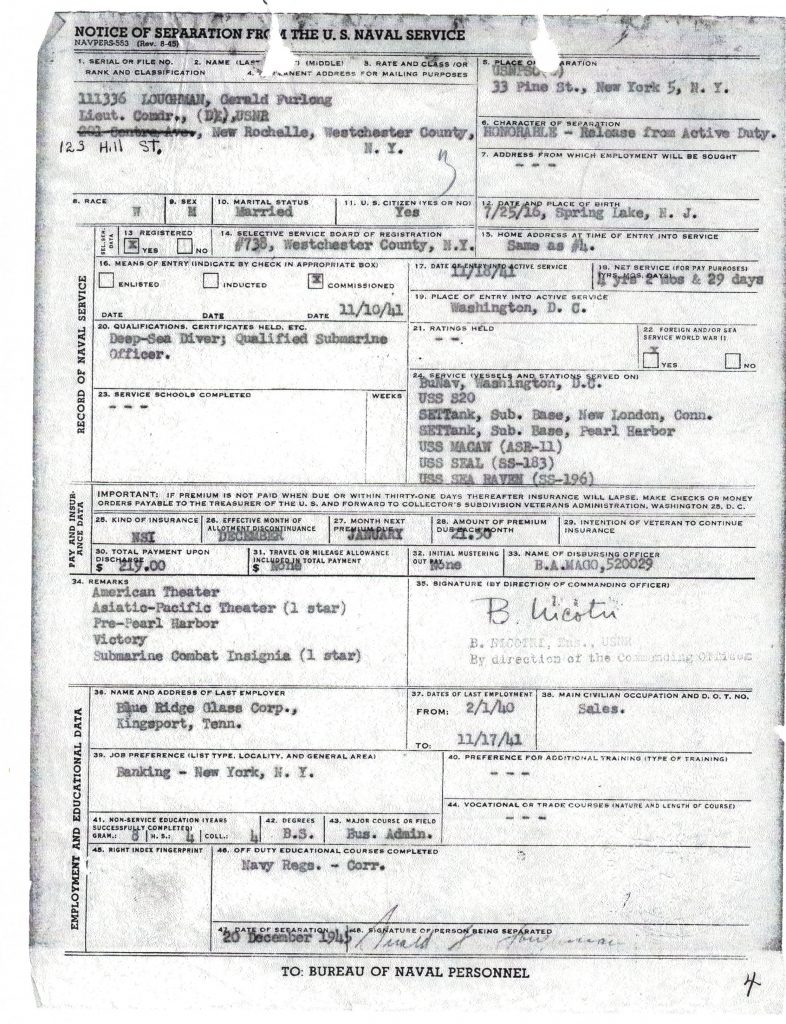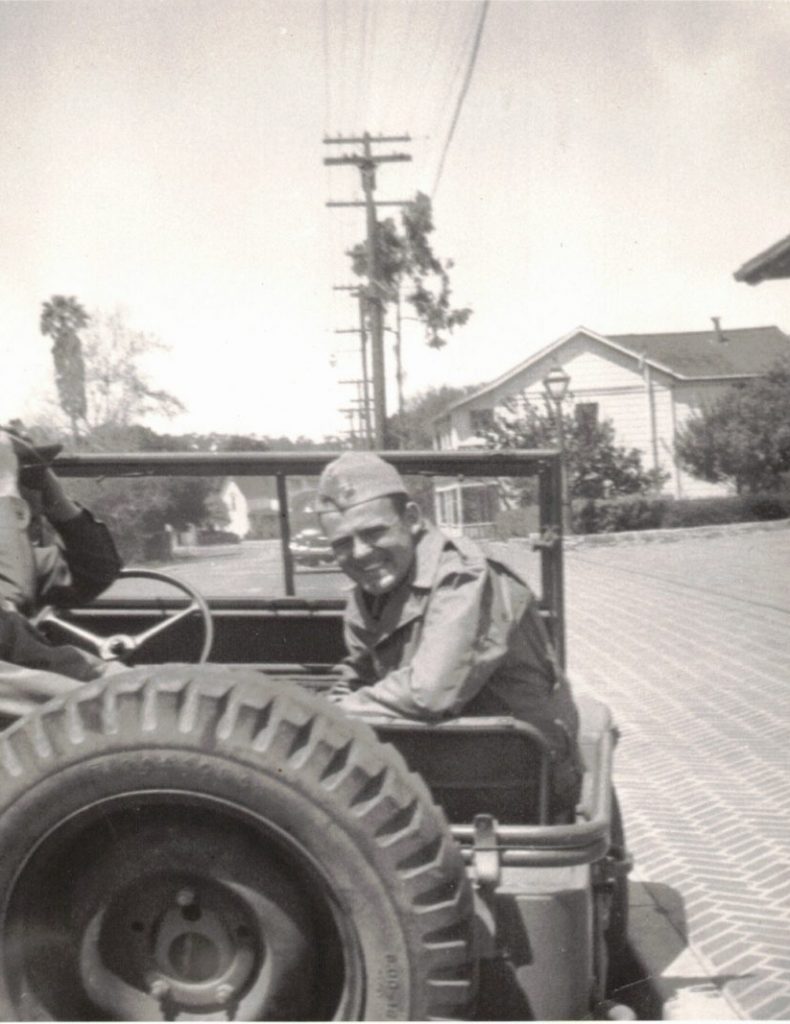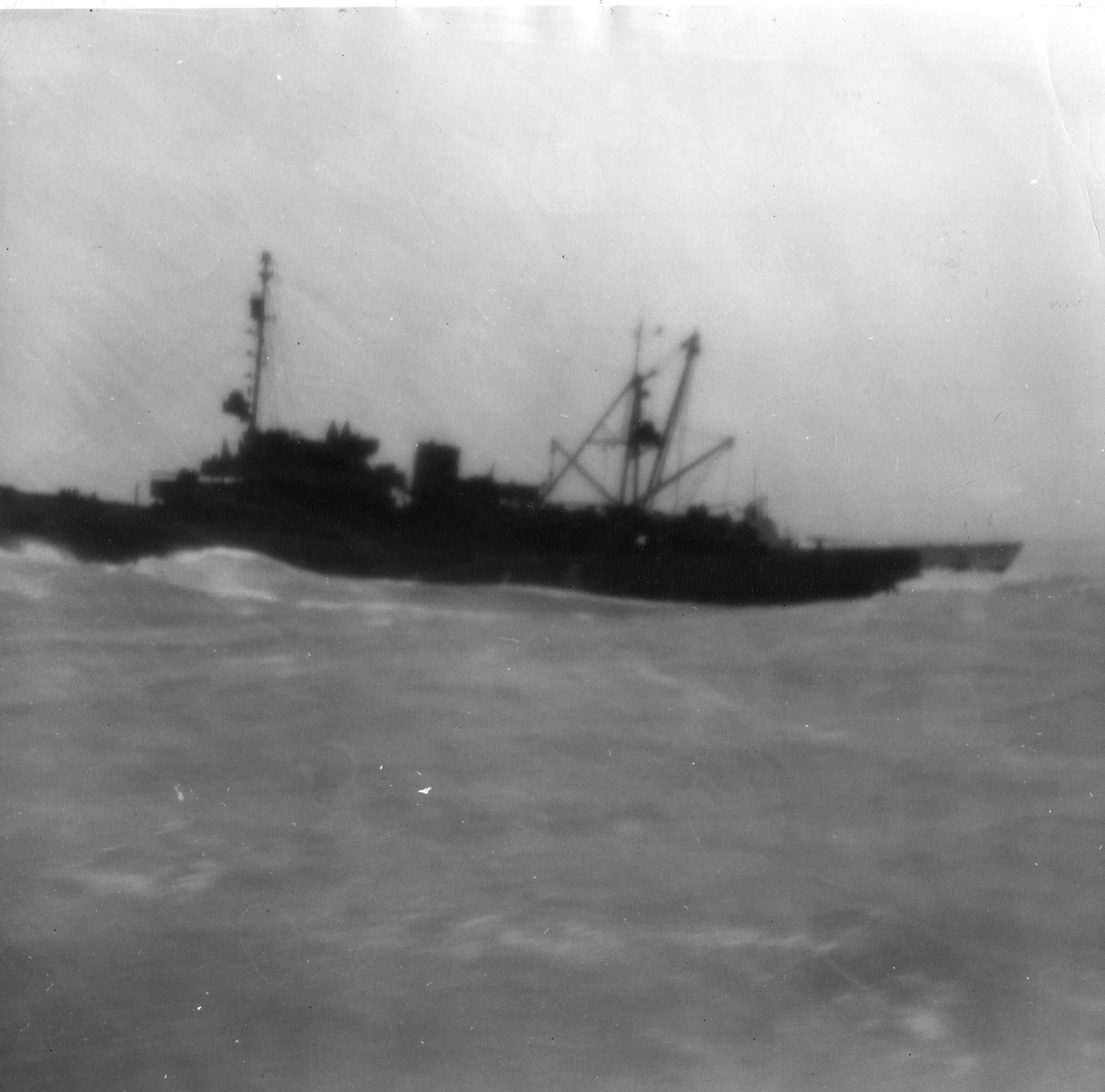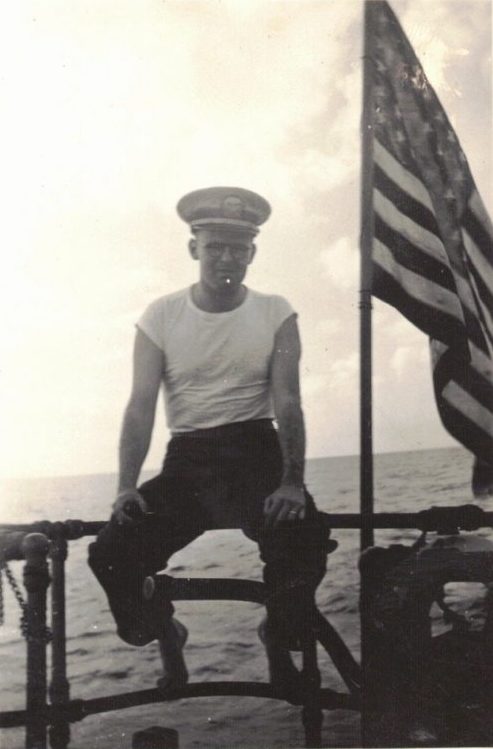Lieut. Gerald F. Loughman was the executive officer (XO or exec for short) on the Macaw. He went by Bud. He was one of nine children, and in one of three sets of twins among those nine. His father, Edward D. Loughman, was a public-spirited lawyer, a rower who excelled in single sculls, and a devotee of William Shakespeare, miniature versions of whose works he is said to have brought along on all his travels. Bud’s mother, Josephine (nee Furlong), was a homekeeper and in her later years, after her husband’s death in 1957, a matriarch who presided with easy authority at gatherings of her numerous extended family.
Bud Loughman was born in Belmar, New Jersey, on 25 July 1916 and grew up in New Rochelle, New York, a near suburb of New York City that television viewers of a certain vintage will recall as the home of Rob and Laura Petrie of the Dick Van Dyke Show. Loughman attended parochial schools in New Rochelle and Fordham University in the Bronx. Denied the requisite congressional appointment to the US Naval Academy, his first choice for higher education, he received a sort of consolation prize in 1938 in the form of a summer job as a ranger in Yosemite National Park.
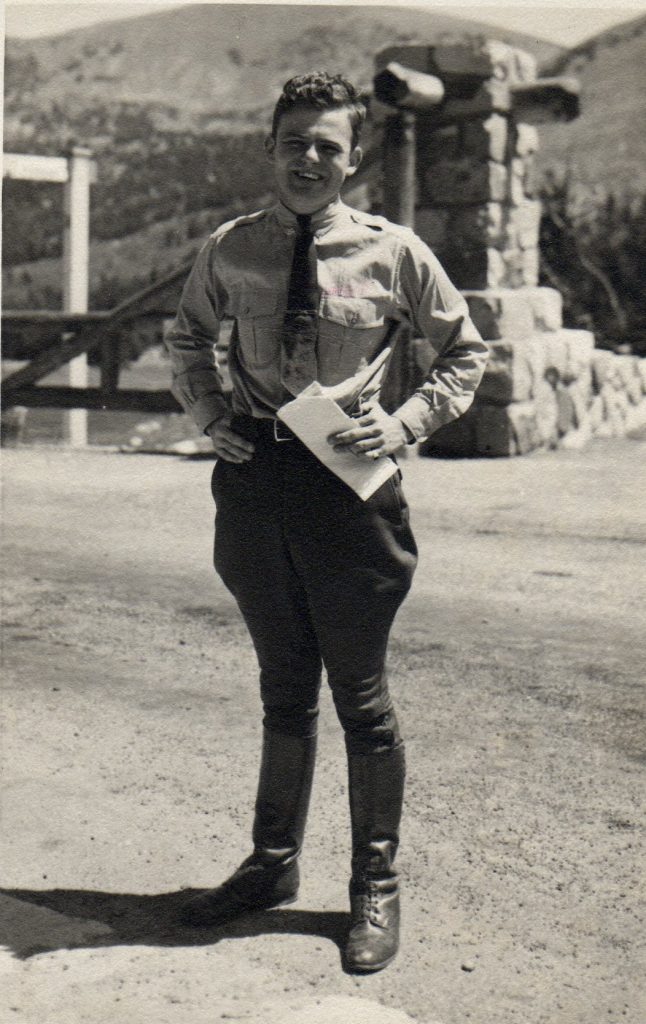
Assigned to the entry station on Tioga Road between Lee Vining and Tuolomne Meadows, Loughman was told on his first day on the job to accompany a party of dignitaries on a sightseeing trip, and found himself the entire security detail for President Franklin D. Roosevelt and friends. Or so family lore has it. When his companions left him alone in the car to take in the scenery at Tunnel View, Roosevelt is said (by my brother, to whom I believe my dad related this adventure) to have beckoned to his youthful guardian and expressed delight upon hearing that he was from New York too. A British newsreel documenting that day’s excursion shows a ranger standing by the president’s convertible at the Tunnel View. The film is too grainy to confirm his identity with anything like certainty, but I think it’s my dad.
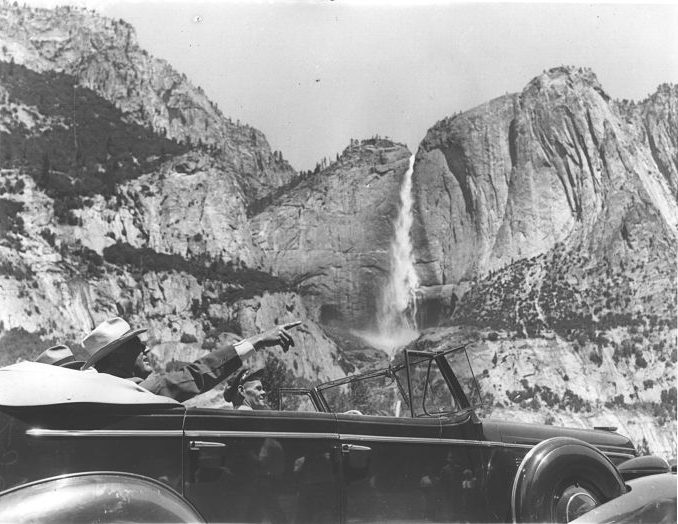
Having enlisted in the Navy less than three weeks before Pearl Harbor, Ensign Loughman was posted first to the Bureau of Navigation in Washington, DC, where, in his capacity as a uniformed, college-educated gofer, he was running down a set of stairs one day in great haste to deliver a message, ran into Secretary of the Navy Frank Knox, and knocked him down. Knox was in his late sixties at the time. The encounter apparently left him more amused than injured.
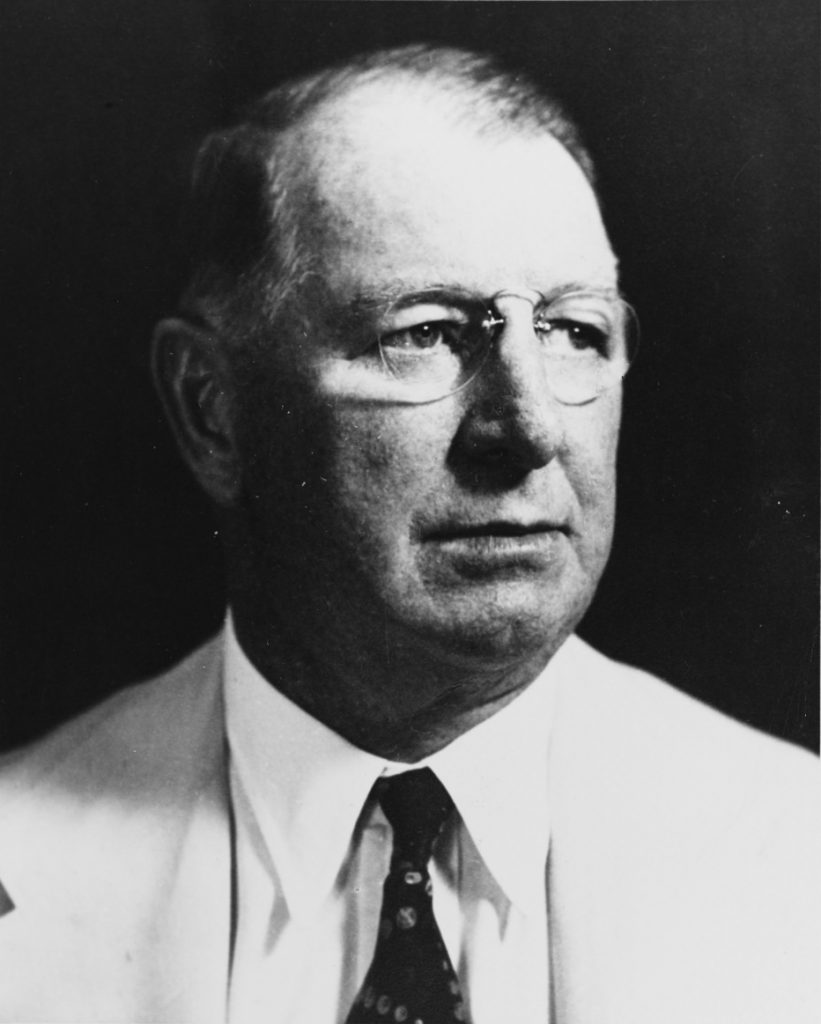
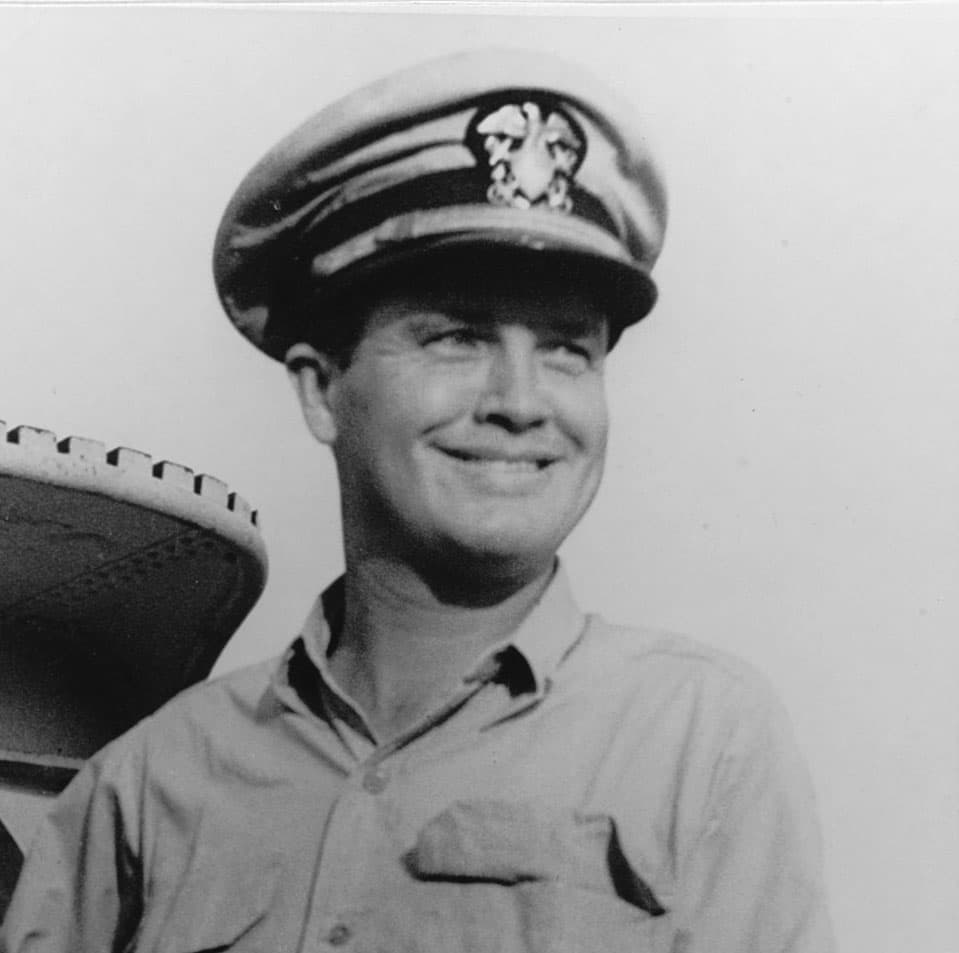
Knox was not the only naval luminary Ensign Loughman accidentally assaulted either physically or verbally in the early months of his naval career. Assigned after his stint in Washington to a training sub in New London, Connecticut, he was atop the conning tower one day standing what was supposed to have been a four-hour watch, awaiting his overdue replacement, who was bald, when a bald head appeared in the opening framed by the hatch and started rising toward him.
“You’re late, you bald son of a bitch,” Loughman greeted the man. The head was that of the captain, the redoubtable Sam Dealey. Dealey was bald too. No doubt to my father’s great relief, Sam Dealey, like Frank Knox, had a sense of humor, saw some in my dad’s gaff, and laughed it off.
In October 1942 Bud Loughman married Patricia Sheils, also of New Rochelle and also one of nine children. He received training as a diver, and spent the month of December 1942 supervising the submarine escape training tank at Pearl Harbor, a facility in which, one year exactly after the Japanese attack there, he made a simulated escape, as from a sunken sub, from a depth of one hundred feet. The Navy had two such training tanks during the war. Paul Burton, captain of the Macaw, briefly supervised the other one, in Groton, Connecticut.
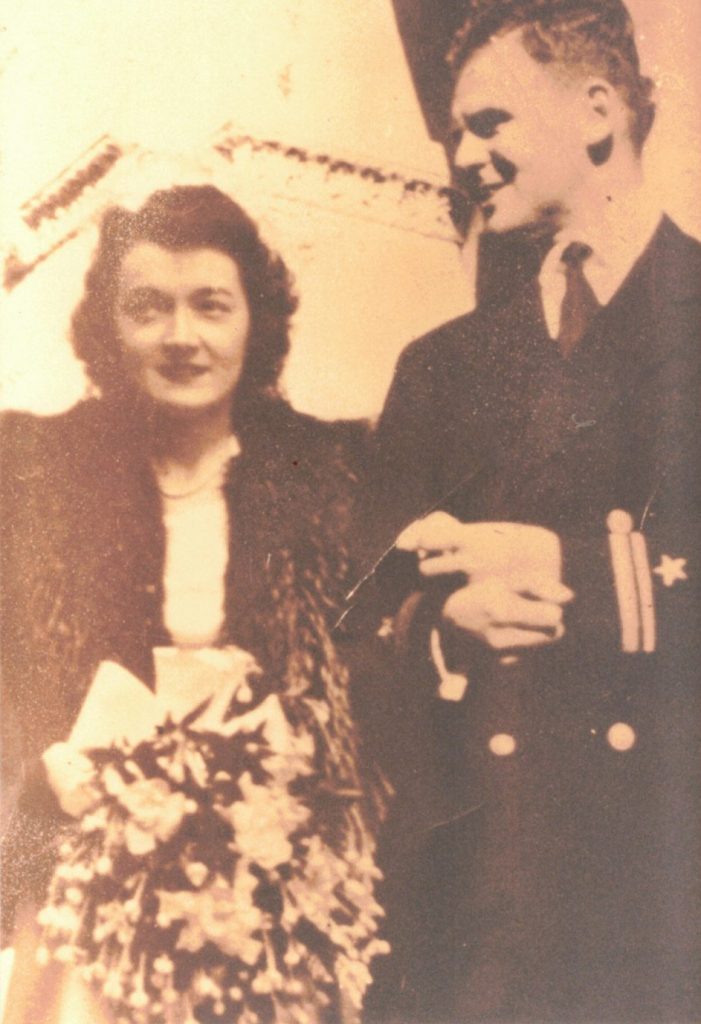
Bud Loughman wanted to run the risk of actually having to escape from a sunken submarine, but he apparently failed an eye test for sub duty and was assigned early in 1943 to the Macaw instead. After the Macaw sank, he was offered command of another submarine rescue vessel but declined, declaring that if he couldn’t be in an actual submarine, he wanted out of the submarine service altogether. As it happened, he stayed in it, getting posted first to the USS Seal (SS-183) as the executive officer, and in the spring of 1945 to the Sea Raven (SS-196) as the communication officer.
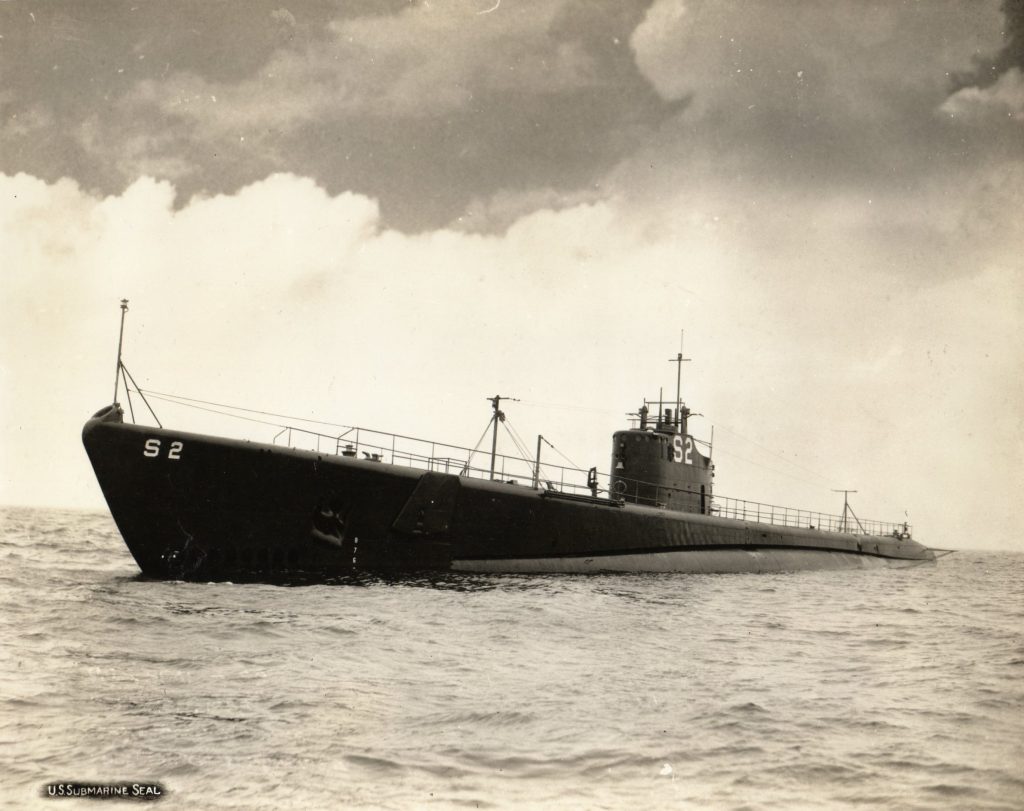
Loughman worked in the glass business, briefly before and for many years after the war, most of them as a sales executive for the Libbey-Owens-Ford Company, later as the owner of a glass shop in Morro Bay on California’s Central Coast. He and his wife raised four children, mainly in Orinda, California, just east of Berkeley, and Rossford, Ohio, a suburb of Toledo, to which LOF transferred him in 1964. He remained in the Naval Reserve until 1968. In his later years, back in California, he distributed Meals on Wheels with my mother and disseminated literature for a group seeking to foster world peace. For some of those years he lived within about five miles of his former Macaw shipmate Donald Srack, and neither of them knew it.
As the end drew near, my dad revisited his days in the Navy and the war. I was sleeping on the floor in his room one night when he cried out, “Prepare to fire starboard torpedo.” That dream obviously harkened back to his time on the Seal or the Sea Raven, but the experience he had revisited most often over the years in reminiscing about the war, and the one that clearly left the deepest impression on him, was the sinking of the Macaw.
As I note in the preface to my book about the ship, he used to tell my sister and brothers and me on the way to or from church every Sunday to pray for Samed, Lehmbecker and Daugherty. It was only after he died and my sister found the files he had compiled in his capacity as acting commander of a sunken ship that I learned who Samed, Lehmbecker and Daugherty were. Or that there was a fourth member of their party, Edward Pitta, who would have been in my dad’s prayers and in his prayer instructions to us too if he had died when they did.
What remains of the Macaw is still there about where it sank more than eighty years ago, but the men who served aboard and about it are probably all gone now. I’m not sure my brothers and sister and I ever said a single prayer for Samed, Lehmbecker and Daugherty between us, but in the interest of better late than never, here’s hoping they and Pitta and all the men they risked and in three cases lost their lives trying to save that day, my dad included, have smoother sailing in whatever waters they might be plying than they had at Midway the morning of 13 February 1944.
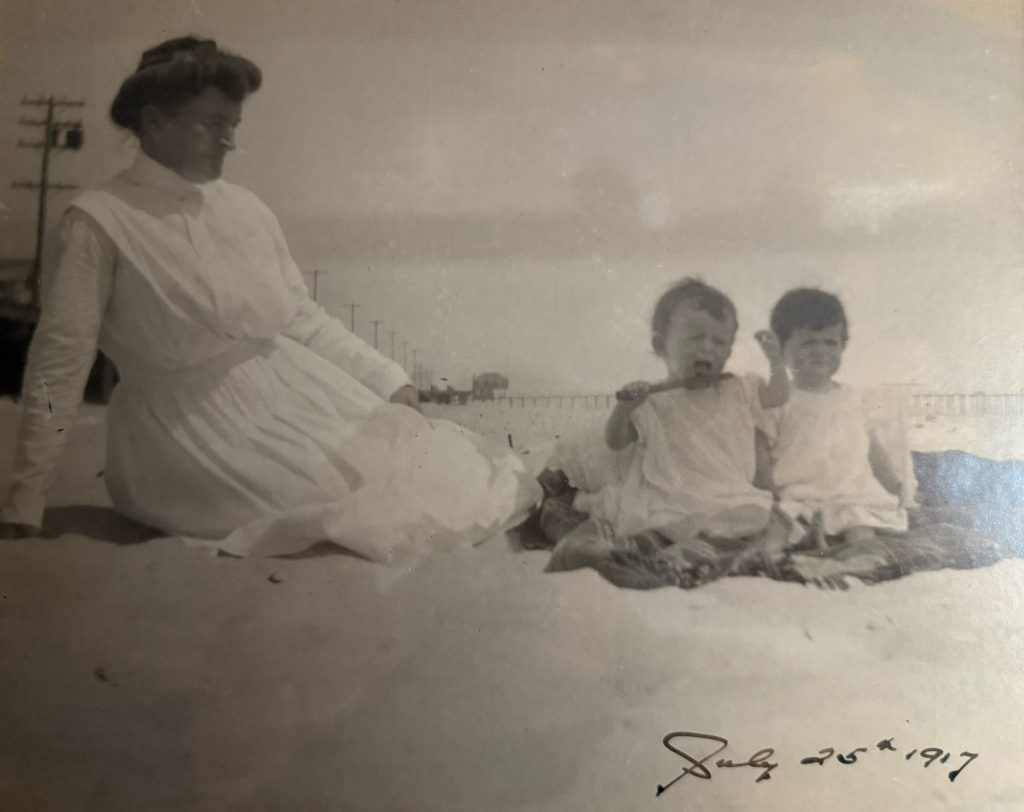
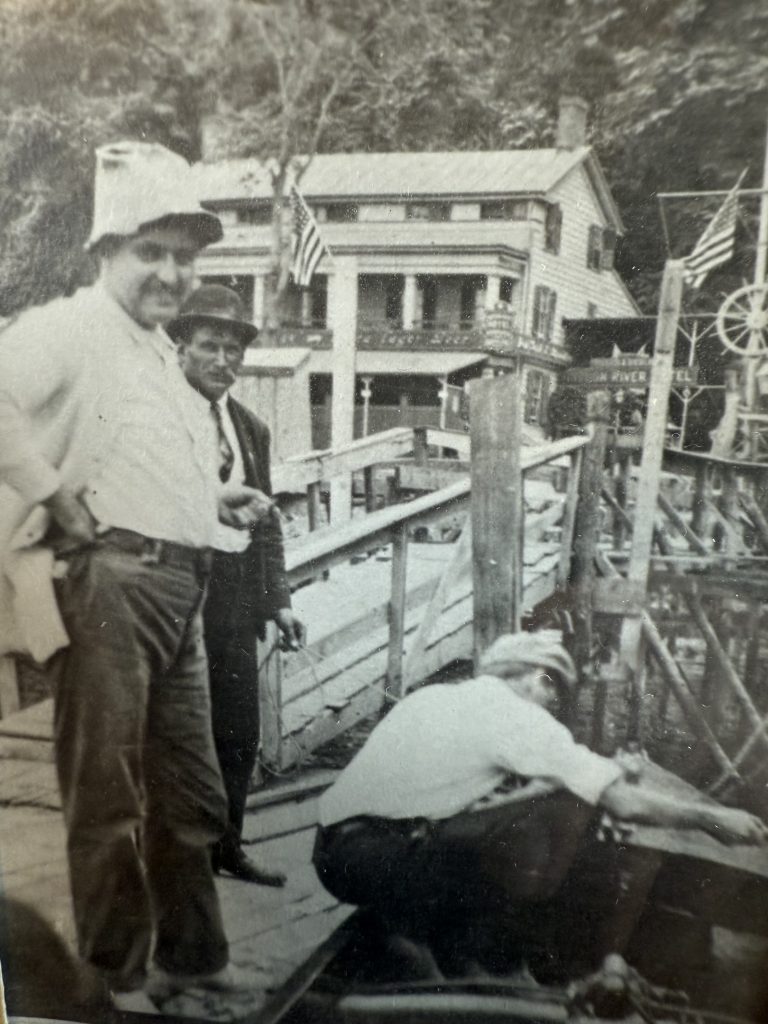
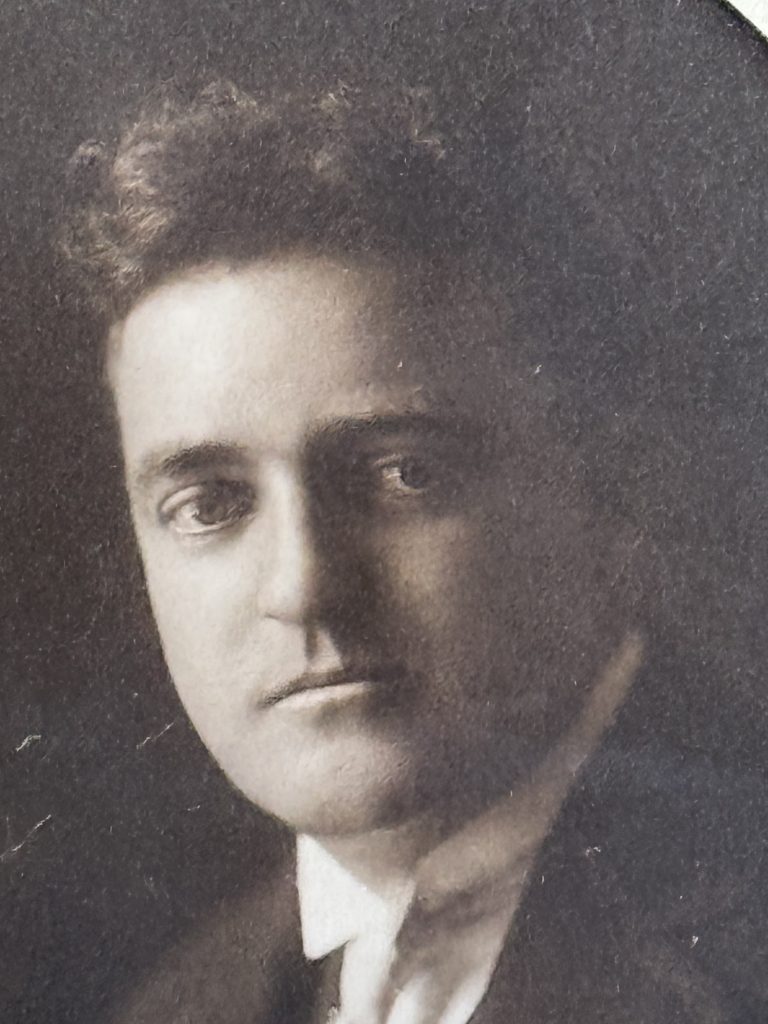
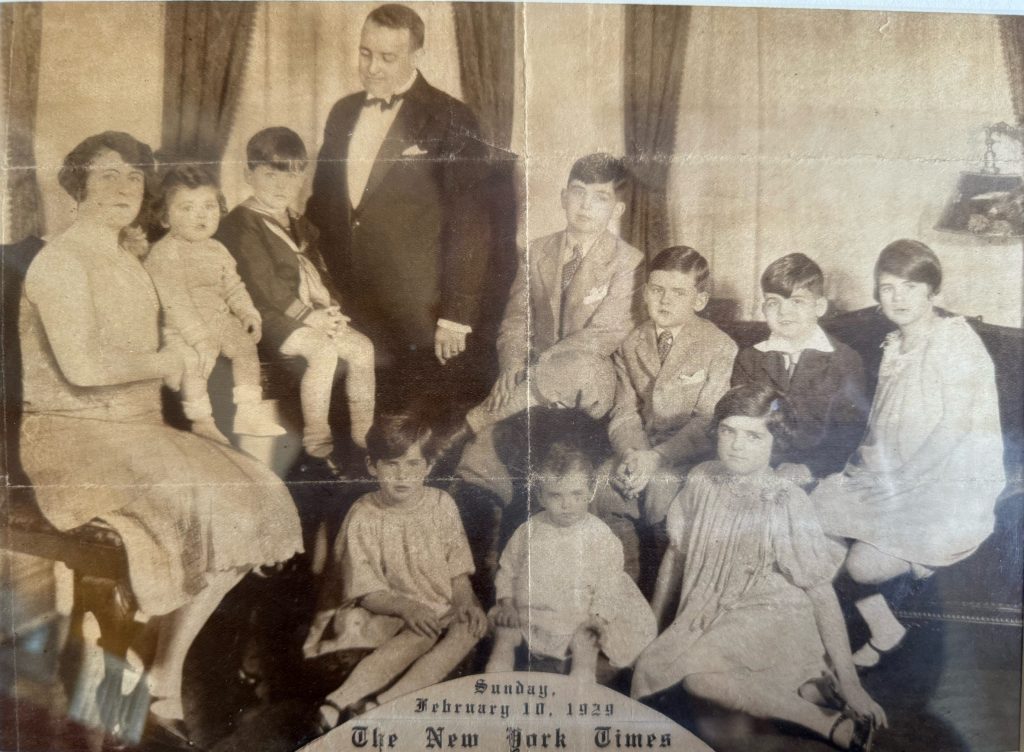
Bud Loughman naval bio
1941 Nov 18: Entry into active service
1941 Nov 18 to 1942 Feb 23: Bureau of Navigation, WDC
Rank: Ensign, D-V(S)
Regular duties: Asst. in Officer Training Section (3 mo.)
Additional duties: Asst. Air Raid Warden and Asst. Security Officer for BuNav
Preference for next duty:
(a) Sea: Aircraft carrier Fleet: Atlantic, Pacific
(b) Shore: Bureau of Nav Location: Navy Dept., WDC
1942 Feb 24 to April 10: Six weeks indoctrination course at Naval Training School, Fort Schuyler, NY
Rank: ensign
Assessment (by Capt. A. C. Stott, CO): average intelligence; everything else above average
“Fine military bearing. Has had small boat sailing experience. Shows a keen interest in the Navy, particularly submarines. Eager to get ahead.
Preference for next duty:
(a) Sea: Submarines Fleet: Lant or Pac
(b) Shore: Training tank Location: Pearl Harbor, T.H.
1942 April 11 to July 25: USS-20 under Lt. Cmdr. Sam D. Dealey, USN
Rank: Ensign
Regular duties: commissary; asst. communications officer; education officer
Additional duties: Ship’s censor
Employment of ship during this period: Experimental tests in vicinity of New London for Under Water Sound Laboratory and U.S.S. SEMMES
Preference for next duty:
(a) Sea: Submarines Fleet: Pacific
(b) Shore: Training tank Location: New London, Conn.
1942 July 25 to Aug 28: USS-20 under Lt. R. E. Styles, USN
Rank: Ensign
Regular duties: commissary; asst. communications officer; education officer
Additional duties: Ship’s censor
Employment of ship during this period: routine services and operations
Preference for next duty:
(a) Sea: Submarines Fleet: Pacific
(b) Shore: Training tank Location: New London, Conn.
1942 Aug 29 to Oct 4: USS-20 under Lt. Cmdr. Earl T. Hydeman, USN
Rank: ensign
Regular duties: commissary; asst communications officer; education officer
Additional duties: ship’s censor
Employment of ship during this period: operations in Subdiv THIRTEEN and special availability at Navy Yard, Portsmouth, NH
Preference for next duty:
(a) Sea: submarines Fleet: Pacific
(b) Shore: Training tank Location: New London, Conn.
1942 Sep 28 to Oct 23: Under instruction at SETT New London prior to assignment at SETT PH
Rank: Lieutenant (jg) D-V(S), USNR
Preference for next duty:
(a) Sea: Aux Sub Resc Vessels Fleet: No preference
(b) Shore: SETT Location: Pearl Harbor
1942 Nov 20: Sailed from US to duty outside continental limits thereof.
1942 Nov 27 to 1943 Jan 1: S/M Base, Pearl Harbor, T.H.
Rank: Lieutenant (jg), USNR
Regular duties: Officer in Charge Training Tank (1-1/2)
Additional duties: Diving Officer (1-1/2)
Preference for next duty:
(a) Sea: SAR Fleet: Atlantic or Pacific
(b) Shore: Diving School Location: WDC
1943 July 12 to 1944 March 19:
Rank: Lieutenant
1944 March 31 to May 14: USS Seal (SS-183) under Cmdr. Harry B. Dodge
Regular duties: Asst. Gunnery and Torpedo, Asst. 1st Lt., Acting XO
Additional duties: Watch officer, coding board, ship’s censor
1944 May 18 to Dec 14: USS Seal under Cmdr. John H. Turner (including seventh and eighth war patrols)
Served as commissary officer (three months), watch officer (seven months) and censor (seven months)
1945 March 19 to May 5: USS Sea Raven (SS-196) under Lt. Cmdr. T.M. Ustick Served as communication officer; sub operating in training status.
1945 Aug 27: Arrived in US from duty outside continental limits thereof.
1945 Oct 3: Promoted to Lt. Cmdr.
1945 Dec 20: Separation from active service at Naval Officer Personnel Separation Center, 33 Pine Street, NYC; granted one month 21 days’ leave, upon expiration of which on 10 Feb 1946 “you will regard yourself released from active duty.”
Residence at time of separation: 123 Hill Street [or 201 Centre Ave?], New Rochelle, NY
1968 July 1: Retired from USNR
Qualifications: deep-sea diver; qualified submarine officer
Vessels and stations:
BuNav, WDC
USS S20
SETTank, Sub Base, New London, Conn.
SETTank, Sub Base, Pearl Harbor
USS MACAW (ASTR-11)
USS SEAL (SS-183)
USS SEA RAVEN (SS-196)
Last employer: Blue Ridge Glass Corp.
Kingsport, Tenn.
From 1 Feb 1940 to 17 Nov 1941
Occ: sales
Education: B.S. in Business Administration
